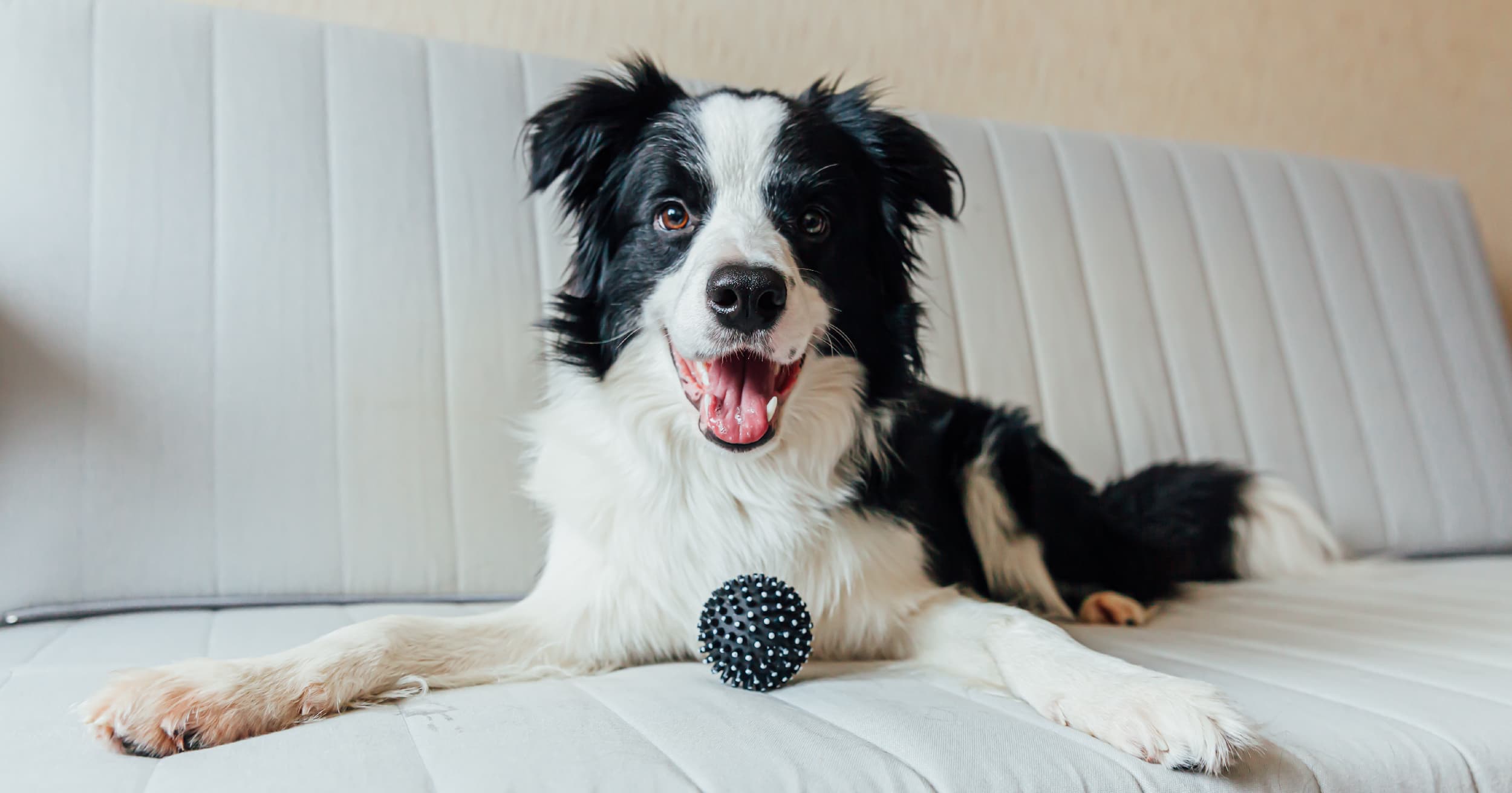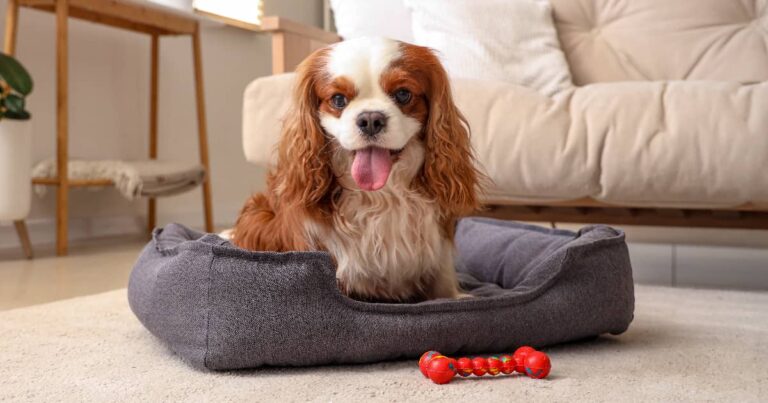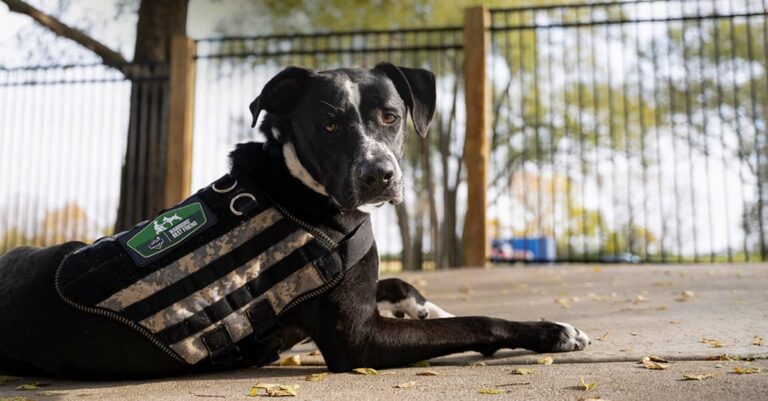Welcome to our Peculiar Pet Facts series, where we investigate the oddities of our pets and explore the science behind them.
Think about your dog’s favorite toy. Are you picturing what it looks like? Did you think about how it smells or how it feels? Probably not. But new research suggests that your dog probably does.
The “Go Find It” Test
When dogs are asked to find a toy, are they just visualizing what it looks like, or do they use multiple senses to tell the difference between toys? It was the question asked by authors of research recently published in Animal Cognition. The researchers answered their question by asking 14 dogs to find toys in a lighted room and a dark room.
To begin the study, each owner trained their dog for 5 to 10 minutes to retrieve a particular toy and rewarded them handsomely when the dog got it correct. They then placed that toy among four “distractor” toys in the room next door. The owner asked their dog to fetch the toy and bring it back to them. They repeated the exercise 10 times, shuffling the target toy and the distractor toys on the floor each time. Then they repeated the test with the toy room in complete darkness.
All dogs were successful above the level of chance of getting their toy from the light and dark rooms (meaning they weren’t just guessing and accidentally getting it right). There was one dog, Scotch, who didn’t do so well the first time round. But after repeating the training with a new toy, they got the toy more than 7/10 times, which was considered successful. Yay Scotch!
The researchers found that the dogs were just as successful at retrieving the toy in the light room as the dark room. However, the dogs did spend more time searching for the toy and took longer to pick it up in the dark room. They also spent more time sniffing while searching in the dark room.
What About “Gifted” Dogs?
Next, the researchers focused on four dogs with the exceptional ability of knowing the names of their toys. These dogs were called gifted word learner (GWL) dogs (more about GWL dogs later). They were part of the first study, but they weren’t any better at finding the toy than the “typical” family dogs.
For this study, 20 named toys that were familiar to the GWL dogs were randomly chosen and scattered on the floor. The researchers did the same light and dark experiment, but this time the dogs were asked to find the toy by name.
The dogs were successful above the level of chance in retrieving the named toy from the light and dark rooms, and there were no differences in success between the rooms. Like the first study, the GWL dogs spent more time searching in the dark and more time sniffing while searching in the dark.
What Does It All Mean?
The results showed that in these studies, vision was the preferred method of searching for the toy because the dogs didn’t spend much time sniffing when the lights were on. But if the lights were off, the dogs could switch to other senses, like smell, to find their toy. Touch (nose, whiskers) may also be one of the senses they used to find toys in the dark, but the researchers weren’t able to be conclude that from this study.
There were no differences between “typical” dogs and gifted word learner dogs, so being smart enough to know the names of toys didn’t help with this test. The research does suggest that when GWL dogs hear a word, they think about what the object looks and smells like, and possibly also what it feels like. This video summarizes the study and you can see some of the dogs fetching their toys.
The Fast Learnings of a Gifted Dog
Another study by the same research group asked whether six gifted word learner dogs, with a known vocabulary, could learn the name of 12 new toys in a week. The researchers conducted an international search for dogs who knew the names of their toys and recruited six border collies who were family pets.
The owners were asked to teach their dog the names of 12 new toys in one week. It was up to the owner on how much time they spent training their dog, with four owners playing with their dogs and naming the toys for only around 30 minutes a day. To test the dogs’ knowledge, the 12 new toys plus eight old toys the dog already knew the name of were placed in a different room to the owner. The owner then asked the dog to get the new toys by name.
The dogs were allowed to play with the new toys for one more week then the toys were stored away. After one month, six toys were randomly chosen and the dogs were allowed to play with them for three minutes to release any excitement about getting the toys back. The six toys were placed in another room with eight old toys and the “go fetch X” study repeated. One month later (two months in storage) they repeated the task with the remaining six toys.
In the first quick-learning test, two of the dogs retrieved all 12 toys correctly and four dogs retrieved 11 toys correctly. For the one-month memory test, five dogs got all six toys and one dog got three toys, which wasn’t above the level of chance. In the two-month memory test, three dogs got all six toys, one dog got five toys and two dogs did not perform above the level of chance.
The researchers concluded that gifted word learner dogs could learn up to 12 new object names in one week (and possibly could learn even more). Most GWL dogs could remember their new toys’ names after one month, and half of the dogs could remember them all after two months. This is impressive considering four out of six owners only spent about 30 minutes a day training their dog during the one-week training period.
The talents of a gifted word learner dog are remarkable, but it’s also impressive that a “typical” dog can find a specific toy in the dark. Dogs may prefer to find things with their vision, but if you play hide and seek with them in the dark, they’ll find you!

RELATED POST: Debarking Pet Myths: Does Resource Guarding Go Away by Itself?







